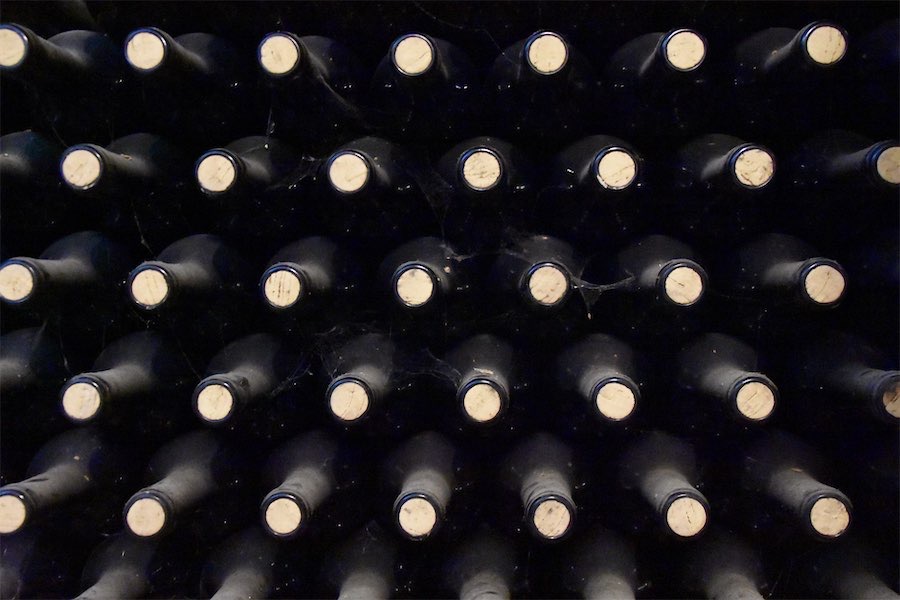
Wine writer RICHARD CALVER discovers wine blending is all about percentages…
WINE blends mean that you are putting your faith in the winemaker to ensure that the varietals in the mix are more than the sum of their parts.

This was expressed in an article in the “Wine Enthusiast” magazine: “The art of blending… is to take individual pieces and make the sum of what you’re blending better than those individual pieces you started out with.”
Recently, these thoughts came to mind as I tasted an unusual, young blended red: a 2020 Grenache Touriga (a Portuguese grape variety) from Hither & Yon in the McLaren Vale.
It was a delight to drink young, with a strawberry/cherry flavour that finished well, a good length for a wine so young.
As we were drinking this wine, my companion asked, quite innocently, how much of the grape variety needs to be present for the vintner to market a wine as, say, a grenache or a shiraz rather than as a blend?
I blurted out from some hidden well of knowledge that in this country it is 85 per cent. But just as where in any context if you have acquired and then stored this sort of knowledge in your subconscious, it’s always best to check an objective source before you rely on that knowledge.
The lawyer in me harrumphs and then articulates that admonition. At the same time, I ask: are there a lot of first-person singular objective pronouns… or is it just me?
In any event, I scuttled off to my computer and looked at the blending rules summarised on the Wine Australia website. There are in fact rules about minimum compositional requirements when making vintage, variety and geographical claims. Let’s focus on the one that governs when you can call something 100 per cent of that particular grape variety ie, call it a grenache or a shiraz per the earlier question.
Well, defying mathematics, its actually the number I mentioned: 85 per cent. And further in defiance of numbers logic, if a winemaker adds juice or concentrate to a wine in order to, say, add sweetness that dollop doesn’t count towards varietal composition so long as less than 5 per cent is added.
Another relevant rule is that you also can’t leave a variety off a wine label unless you have listed all of the varieties that appear in greater proportions on that label. Wine Australia uses an example to clarify (?) the rules.
They say that if a wine is 70 per cent semillon, 20 per cent chardonnay and 10 per cent sauvignon blanc, you can’t label your wine as semillon sauvignon blanc. The wine would either need to be labelled as “semillon chardonnay” or “semillon, chardonnay, sauvignon blanc”.
And in further confirmation of the 85 per cent rule: “You couldn’t label your wine as just ‘semillon’ because less than 85 per cent of the blend is semillon.”
I called Rachel Triggs, general manager, Corporate Affairs and Regulation at Wine Australia and she indicated the 85 per cent rule was compatible with overseas standards including the standard accepted by the world wine trade group and the members of the International Organisation of Vine and Wine – with 42 members of which Australia is one.
I asked why disclosure of all varietals is made on wine labels and Rachel said it’s because of recognised practice of topping barrels and the like, and giving winemakers flexibility in adjusting profiles between one vintage and the next. The rule has been in force since the early 1990s and there is no intention that it will change.
I asked: “Don’t consumers need to know the other varietals in the wine?” and Rachel said: “Well, at the end of the day if it’s got 85 per cent of shiraz it’s going to taste like a shiraz.”
Seems we are putting faith in our winemakers at every turn.
“The power of accurate observation is commonly called cynicism by those who have not got it.” –George Bernard Shaw
Who can be trusted?
In a world of spin and confusion, there’s never been a more important time to support independent journalism in Canberra.
If you trust our work online and want to enforce the power of independent voices, I invite you to make a small contribution.
Every dollar of support is invested back into our journalism to help keep citynews.com.au strong and free.
Thank you,
Ian Meikle, editor




Leave a Reply